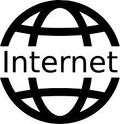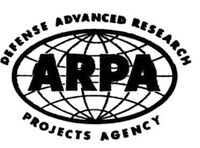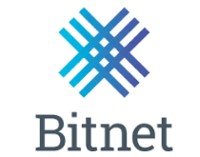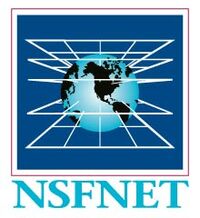Internet

| |
| Internet | |
| Developer | |
|---|---|
| Publisher | |
| Released | 1969-1990 (ARPANET) 1981-1991 (CSNET) 1981-1996 (BITNET) 1985-1995 (NSFNET) 1991-present (World Wide Web) |
| Added to Museum |
|
The internet is a global computer network that uses the internet protocol suite (TCP/IP) to communicate between networks and devices.
Early history
AARANET
The Advanced Research Projects Agency Network, better known as ARPANET, was the first network of interconnected computers that would lead to the internet.
In 1969, the first computers were connected by the United States Advanced Research Projects Agency, or ARPA.
The Network Control Program was implemented in 1970 and it became fully operational in 1971.
ARPA was renamed Defense Advanced Research Projects Agency, or DARPA, in 1972.
TCP/IP
The Transmission Control Protocol was implemented in 1974 and the network expanded rapidly. Remote login, file transfer, and email were added shortly afterward. The Defense Communications Agency assumed operational control in 1975.
In 1978, the third version of the network protocol was split into two parts, forming TCP/IP. The Transmission Control Protocol was the connection-oriented service and the Internet Protocol was the connectionless layer.
Unix-to-Unix Copy
Unix-to-Unix Copy, or UUCP, was developed at AT&T Bell Laboratories by Mike Lesk in 1977. By 1978, eighty-two computers within AT&T Bell Labs were connected via UUCP.
CSNET
In 1981, the United States National Science Foundation, or NSF, launched the Computer Science Network, also known as CSNET.
This greatly expanded access as it was created for sites that couldn't connect to the ARPANET due to a shortage of funding or difficulty in obtaining authorization.
The fourth version of the TCP/IP internet protocol suite was implemented in January 1983. It was installed on the CSNET and the ARPANET after the United States Department of Defense made it standard in all military computer networking.
BITNET
In 1981, Ira Fuchs at the City University of New York and Greydon Freeman at Yale University founded BITNET. BITNET originally stood for "Because It's There Network", but it was later changed to mean "Because It's Time Network".
A college or university that was part of BITNET leased a phone line from an existing BITNET node. The university side constituted one side of a data circuit and the connecting point into BITNET constituted the other end. Modems were required for both ends of the data circuit. The data would be sent from one of the connecting point sites and other institutions would connect to its site free of charge.
EUnet
EUnet, which initially stood for European Unix Network, was a group of loosely connected computers that were connected in 1982 through the European UNIX Users Group and the first international UUCP connections.
mcvax was a computer in the Netherlands that connected to computers within EUNet in 1982 and to international connections through UUCP beginning in 1983. It was the international backbone node of EUnet.
Launch of SDN in South Korea
On May 15, 1982, the TCP/IP network known as the SDN was launched in South Korea. SDN originally stood for Software Development Network, but this was later changed to System Development Network. The first computers to be hooked up to the South Korean network were a computer at the Department of Computer Science at Seoul National University and a computer at the Korea Institute of Electronics Technology in Gumi.
A computer at the Korea Advanced Institute of Science and Technology was connected to the SDN in January 1983. In August 1983, SDN connected to mcvax in the Netherlands through UUCP. SDN connected to the CSNet in December 1984.
Seperation of US Military access from ARPANET
In September 1984, the ARPANET was restructured. Some United States military sites were given access to unclassified military material through a network known as MILNET. The remaining structure of ARPANET remained for civil purposes, reducing the number of nodes from 113 to 47.
NSFNET
The National Science Foundation Network was a network that was abbreviated NSFNET.
The National Science Foundation of the United States aimed to create a network.
This network expanded access beyond that of the CSNET.
This network was designed for researchers to access information.
This information was stored on supercomputers operated by the NSF in the United States.
The National Science Foundation Network, or NSFNET, went live in 1985.
It used the technology created by DARPA for the ARPANET.
This included the TCP/IP protocol, remote login, file transfer, and email.
Shutdown of ARPANET and CSNET
Although the military access was separated from ARPANET, it remained for research purposes until it was decommissioned on February 28, 1990. After the decommissioning of ARPANET, some Interface Message Processor packet-switching nodes remained operational as late as July 1990.
As the closure of the ARPANET and the success of the NSFNET left the CSNET services redundant, the CSNET was shut down on October 1991.
World Wide Web
The World Wide Web, abbreviated as WWW and commonly known simply as the web, was launched in 1991.
Using a web browser, audio and visual resources can be accessed on websites.
It was invented by Tim Berners-Lee at CERN in 1989.
The first web browser, WorldWideWeb, later renamed Nexus, was first released on December 25, 1990.
The World Wide Web was released to research institutions outside CERN beginning in January 1991.
It was released to the general public in August 1991.
Shutdown of BITNET and NSFNET
With the release of the World Wide Web to the public, it became the primary means by which people worldwide interact on the internet.
Thus, the remaining legacy networks became redundant. BITNET shut down in 1996 and NSFNET shut down in 1995.




